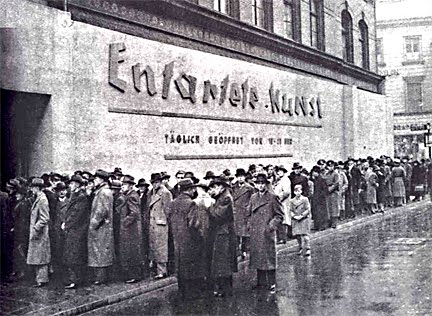Digital Diary –
Minimalism
The concept of
minimalism was a response to abstract expressionism, which was a dominant art
form for quite some time. The object of minimalist art was to focus the
attention of the viewer onto the object, and the minimalist artists also strove
for complete simplicity in their work.
The leading Minimalist
artists were Frank Stella, Robert Morris and Carl Andre. Sculpting was a major
interest of the minimalists, and they blurred the lines between printing and
sculpting. This was very much what they aimed to do. It was also a reaction
against the excesses of abstract expressionism. The minimalists were not
interested in self expressionism or of showing raw emotion in their art. They
strove to remove metaphors or references of any kind from their
paintings/sculptures. They labelled themselves as the “Masters of Less”.
Their chosen mediums
were usually flat surface colours, industrial materials and flat finishes.
Often they would work in a series of ‘repititions.’
Frank Stella, born in
1936 in Malden, Massachussetts, has been considered a major American artist for
almost fifty years, becoming in 1970, the youngest artist ever to have a career
retrospective at the Museum of Modern Art in New York. He is best known for the
monochromatic pinstriped paintings that first brought him to prominence, which
when seen in person have a very moving, vulnerable quality and (a few years
later) for the colour field paintings on odd shaped canvasses. He also help to
bring printmaking to the fore as an art form in the late 1960s, and his work in
the 1980s included paintings stuck on objects such as freestanding metal
pieces. This was in high contrast with his very early minimalist works.
Stella’s Black
paintings series consists of parallel black stripes. These were exactly
painted, and the medium used was house paint.
The painting pictured
above is part of Stella’s Black series paintings. It is painted with house
paint. It is just one of a series. I like it for its directness, its three
dimensional feel, its painful exactness. It obviously took time to paint. There
is nothing but order. Everything else is stripped back. When I look at this
work, I think bare minimum, neatness, geometry.
"I like real art. It's difficult to
define 'real' but it is the best word for describing what I like to get out of
art and what the best art has. It has the ability to convince you that it's
present - that it's there. You could say it's authentic... but real is actually
a better word, broad as it may be."
The above is a quote from Frank Stella,
which I feel defines his work well.
Stella’s main intention was to define and
outline the flatness of the surface, to draw attention to this.
Then Came a Dog and Bit the Cat, 1984

Then Came a Dog and Bit the Cat, 1984











